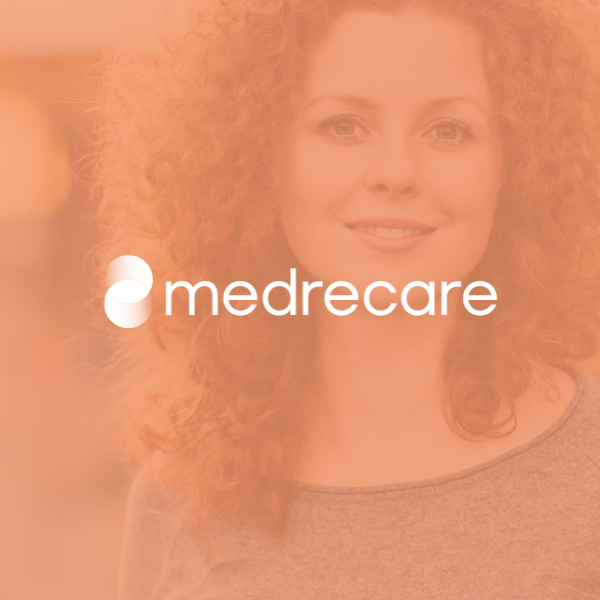Health Marketing
Credible communication in health and care
Communication in healthcare is a very special challenge. During our more than 20 years of working for clinics, doctors, care and social institutions, we have repeatedly found that the tools of classic marketing are not effective here – sometimes they are even counterproductive. If you want to communicate successfully in the healthcare sector, you have to break new ground.
Traditional marketing is reaching the limits of systematicity, credibility and ultimately efficiency for healthcare providers.
The very principle of scalability of campaigns, which presupposes a rigid stimulus-response scheme, reaches its limits in healthcare. Most campaigns neglect the special role (attribution) of the patient and assume a largely passive attitude of the customers.
We like to talk about patient empowerment in healthcare marketing. What we actually mean is GOOD ADVICE.
In the healthcare market, however, we are dealing with a completely different attitude on the part of the potential patient: 89% of the population research health-related topics on a regular basis. The personal involvement leads to an active attitude (lean forward); in addition, significantly more time is invested in dealing with health-related topics than for other products. The classic consumer attitude of “lean back” is becoming “lean forward,” and media emotionalization is turning into informational self-sufficiency.
Healthcare communication
Public communication / B2C
- Classic ads public press, baby gallery etc.
- Brochures, info folders, posters etc.
- Internet
- PR Events
- Marketing for subbrands: positioning of hospital-owned service providers (e.g. canteen kitchen, cleaning)
Employee communication / corporate identity
- House Journal
- Internet/Intranet
- Community events, training
- Job announcements, greetings / farewells
Patient information / customer loyalty
- Patient folder
- (Patient-specific) information material
- Internet
- Info events, event management
- Patient brochure
Corporate Design
- Development of logo, design elements, typography (corporate design manual)
- Branding and management
Market research
- (Regional) processing of current market research results, analysis
Consulting
- Consultant mediation
- Advanced training
- Quality Report
Referral marketing
- Concepts for disciplinary integration of referring physicians (competence centers, etc.)
- Information material for instructors
- Information material for the patients of the referring physicians
Strategies in health marketing
Die Grenzen des klassischen Marketings
Traditional marketing is reaching the limits of systematicity, credibility and ultimately efficiency for service providers in the healthcare sector.
It is true that healthcare marketing has risen from a specialized discipline to a permanent fixture in marketing – at least this is the impression given by the increasing number of publications. However, it offers little real assistance to service providers.
The dilemma is already apparent in the most common definition of healthcare marketing:
“Health care marketing is the transfer of proven marketing tools to the health care field.”
This definition raises two questions: In which markets have these “proven tools” actually proven themselves? And: is there a unified health sector? Only if this is the case can we also transfer these tools 1:1.
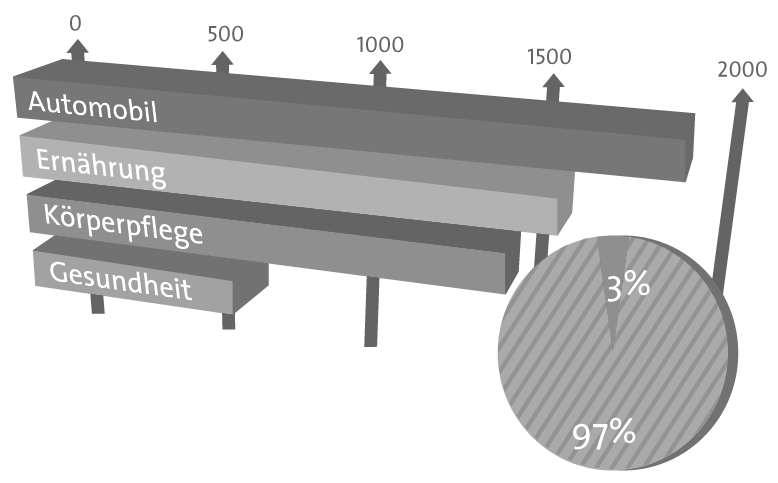
A look at budget allocations in the German advertising market provides a clear answer to the first question. The bulk of the German advertising industry deals with the various varieties of retail. Only 3% of media budgets go to healthcare. Everything that advertisers know today about the impact of their methods, they have developed, tested, controlled and scaled in retail. However, the modes of action in healthcare are not comparable to those in retail.
Dynamic networks of relationships require dynamic models
The very principle of scalability of campaigns, which presupposes a rigid stimulus-response scheme, reaches its limits in healthcare. Most campaigns neglect the special role of the patient and assume that retail customers are largely passive. But the healthcare patient is not a lean-back customer, and he or she is involved in dynamic networks of relationships that do not function according to simple stimulus-response mechanisms.
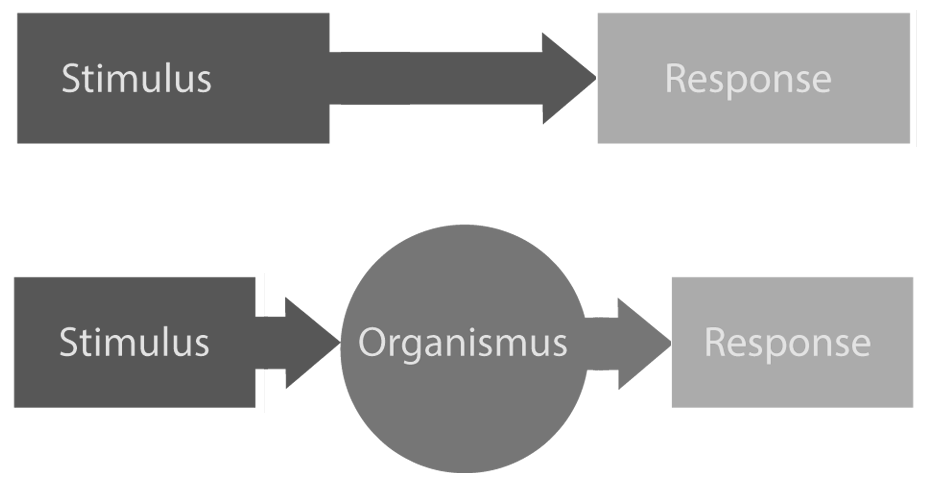
The classic stimulus-response scheme: Homo economicus is far from being obsolete in classic marketing. The complementary view of the “organism” also remains static.
The alleged homogeneity of the healthcare market has also proven to be an illusion: a “healthcare marketing” that hardly distinguishes between the pharmaceutical industry, health insurance companies and service providers will not be successful.
Healthcare structures force focus on communication
Most common marketing tools fail when applied to healthcare providers: From the classic 4-P model, when looked at closely, not much more remains than “promotion”, i.e. communication. This has the central key function when the customer “patient” can neither freely choose the product nor decide according to the price.

If we take a generous view of the term “place” – for example, as “point of care” – then at least the fourth “P” still offers exciting approaches for successful marketing.
The special role of the patient
The “Lean Forward Customer
Advertisers regularly go to great lengths to capture the attention of customers. In an environment permeated with advertising messages, the supreme art of the creative is to gain a few seconds of “awareness” for the placement of the advertising message. This attention is a scarce commodity and must be bought with large marketing budgets. In a consumer world characterized by oversupply, the majority of customers lean back comfortably: Leaned Back.
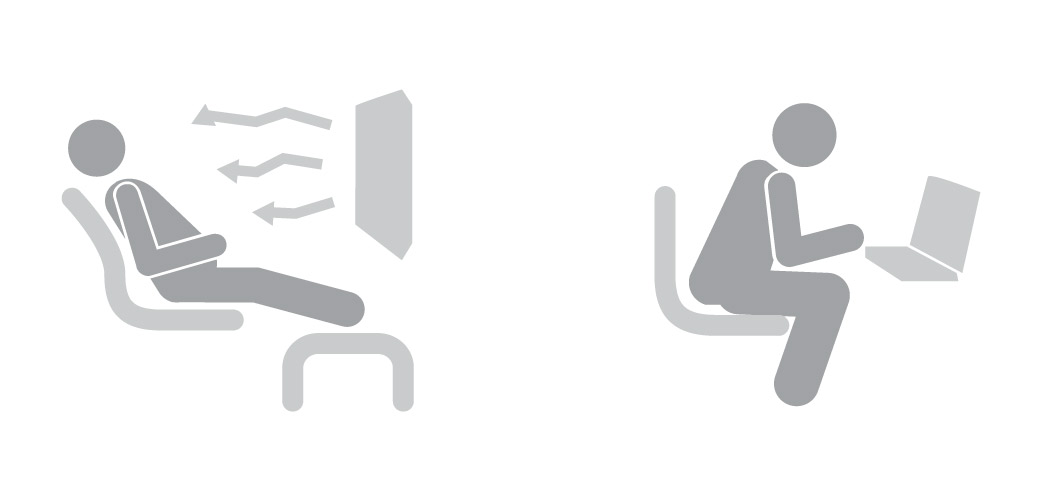
The passive customer becomes an active patient
In the healthcare market, however, we are dealing with a completely different attitude on the part of the potential patient: 89% of the population regularly research health-related topics – mostly on the Internet.
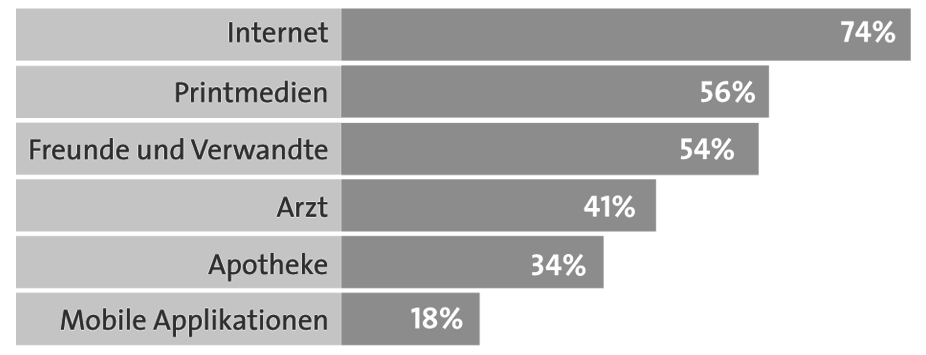
Personal involvement leads to an active attitude; significantly more time is invested in dealing with health-related issues than in other “high involvement” products such as cars. Lean Back” becomes “Lean Forward”, the rather passive customer becomes the actively information-seeking patient.
Media Convergence
Choosing the right ambassadors
If we look at the path of a potential customer from the first contact with a product to the purchase decision, the so-called decision funnel (customer journey), we notice major differences in healthcare compared to most other industries.
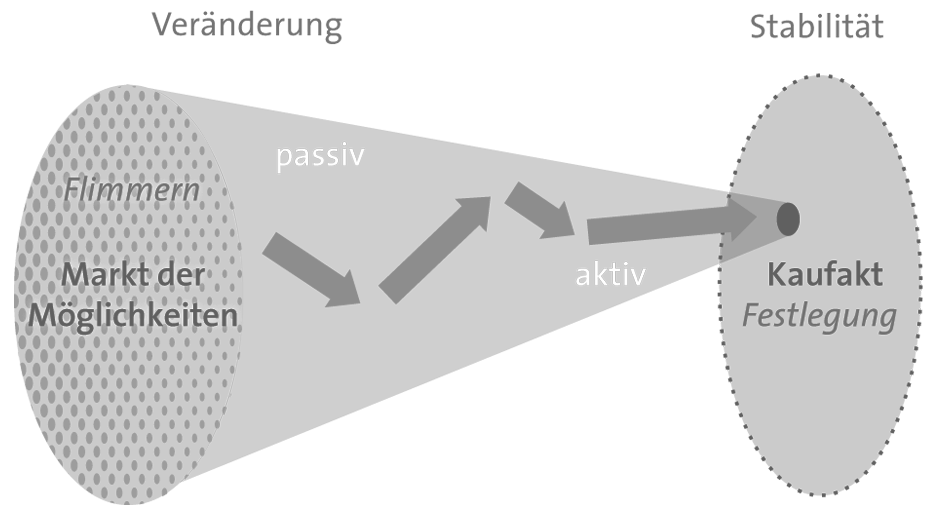
At the beginning of his journey, the customer is in the “market of possibilities” with all the advertising impressions vying for attention. There are media that function well in this undefined primal state: They stimulate, show possibilities, arouse desire, awaken needs. These include outdoor advertising, TV or tabloid ads. On the long road towards the purchase decision, other media now become more relevant: the ephemeral becomes tangible, the flicker gives way to the fixed, the emotional charge now needs grounding. At the “point of sale”, the impressions condensed into a “brand” become the impulse to buy. So much for the theory.
It’s no longer primarily about reach, but about resonance.
But what happens when a person is catapulted from the “market of possibilities” directly in front of the decision – for example, by a diagnosis?
He will do targeted research. He will use media where he can direct the flow of information: the Internet, magazines, blogs, conversations, social media, reference books. He will prefer the tangible to the elusive. And he will place great emphasis on credible sources.
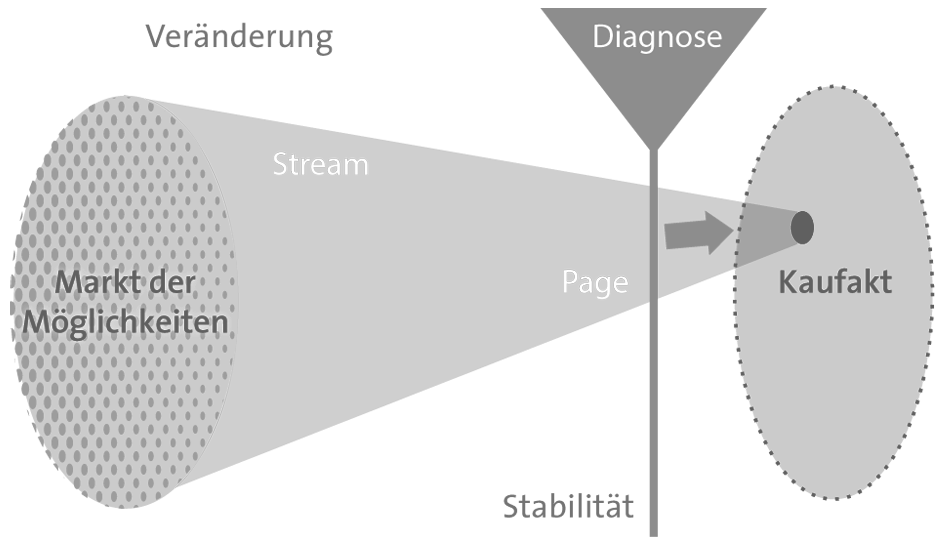
For our media selection, we use a system based on the convergence criteria of the ARD/ZDF media analysis. It distinguishes between “page” (move what you look at) and “stream” (look what moves) media.
The greater the current concern of the patient or his relatives, the greater the willingness to actively research, the more efficient “page” media become. The service providers have to comply with this change in the information behavior of their “customers”. This brings the so-called “inbound marketing” into focus.
“Page”- Move what you look at,
“Stream”- watch what’s moving
Another phenomenon supports this strategic direction: surveys on the subject of credibility regularly give the advertising industry a disastrous report card. As soon as a medium comes under suspicion of advertising manipulation, credibility values drop abruptly.
As soon as a medium comes under suspicion of advertising manipulation, credibility values drop abruptly.
In the area of classic brand communication, the so-called sleeper effect compensates for this malus. It separates the recurring messages from the untrustworthy source, giving them new clout. But this phenomenon takes time. Time, which the patient usually does not have when making his “purchase decision”. So the point remains: healthcare communications and marketing always rely on credible sources.
Inbound-Marketing
The art of being found
Knowledge of the healthcare market, decision-making processes, and patient outreach suggest a clear strategy for communicating most healthcare services: inbound marketing. The goal of inbound marketing: The active lean forward customer finds services and products quickly, reliably and easily. It contrasts with traditional outbound marketing, which involves sending messages to customers, such as via direct mail, flyers, radio ads, television commercials, and traditional outdoor advertising.
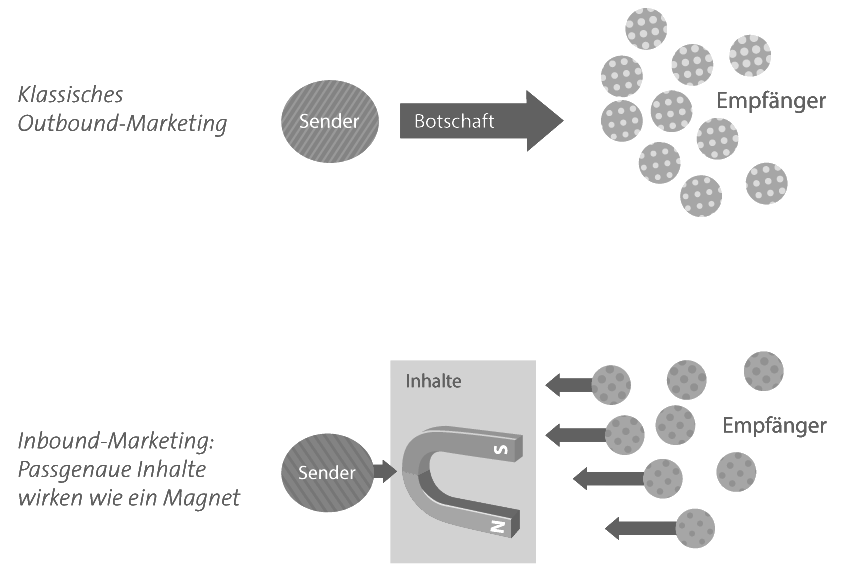
Inbound marketing, on the other hand, tries to create an offer with further product information and relevant content where customers are already searching.
“What Internet sources on health do you find credible?”
Our statistics show that between 74 and 82 percent (!) of all visitors to a clinic homepage do not arrive at the site via the URL – i.e. the actual home page – but via a Google search of a diagnosis. They now end up at the bottom of the directory tree, so to speak, for example in the dissertation of a chief physician. In addition to reading this text, a well-coordinated Internet site offers the visitor further information tailored to his search query and thus establishes personal contact.
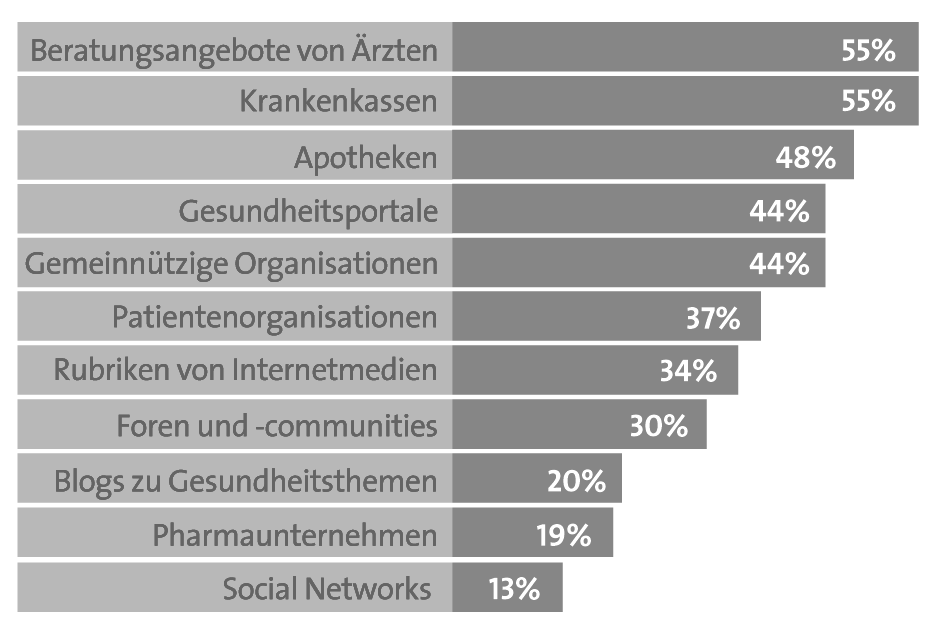
The key role in inbound marketing is clearly content: relevant and credible content.
The medium is the message?
The content decides.
Media philosopher Marshall McLuhan’s famous phrase “the medium is the message” alludes to his definition of media as an extension of the body – this idea is still groundbreaking today. However, the new media – and with them the search engines – have given this thesis an additional twist: Not only does the medium transport the message – the message also leads to the medium.
The success of an inbound campaign depends on compelling content:
They have to be relevant, credible and tailored to the target group.
Depending on the service to be advertised, different formats and media channels are suitable. For example, a field report or an interview video may be the right choice for trainee recruiting; for the communication of a hand surgery service, on the other hand, a graphic presentation as an animation may lead to the goal.
One of the biggest challenges is to connect the services with a real story, to fill them with content and to systematically mine the great “content treasure” that lies dormant in every company.
Inbound marketing initially saves media costs, because the classic media plan with reach calculations and price per thousand contacts no longer plays a role. However, part of the freed-up funds should be used consistently for the creation of high-quality content and the provision of staff resources.
Between info and image
The right communication mix
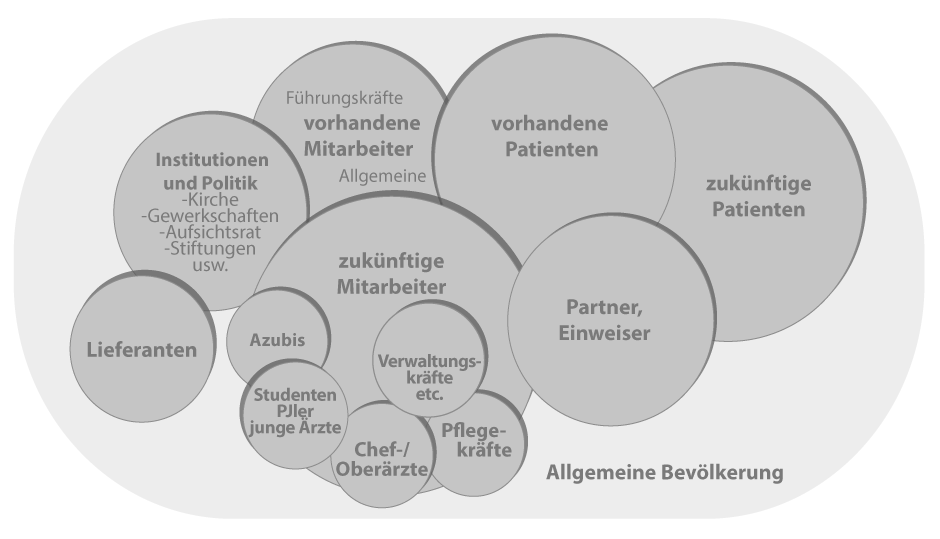
The large and very heterogeneous number of stakeholders and consideration of the connected decision funnels plays a crucial role in the choice of media and content positioning. Therefore, any publication in healthcare must be preceded by a clear decision between info and image. One does not exclude the other, of course, but we should beware of indeterminate hybrids! Any forms of “infotainment” are not effective in healthcare and are described in surveys as lacking credibility.
Clear definition of target groups and information goals increases efficiency
In order to make optimum use of the various communication channels and arrive at a target-oriented media mix, it has proven effective in practice to sort the media according to internal and external target groups as well as information and image.
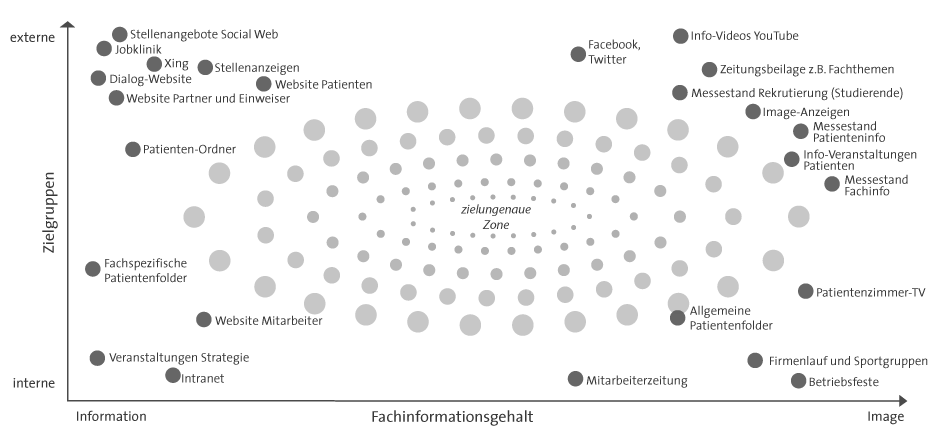
The resulting systematic approach makes it easier to make a balanced selection and avoid redundancies. In addition, we can see at a glance which media in the “pinpoint” center of representation need review.
Experiences at the “Point of Care
Brand is also a powerful tool in healthcare that can give an offering a unique position in the market. A consistently and purposefully managed brand offers the incomparable opportunity to make very complex and diverse impressions and experiences retrievable in a symbol.
In healthcare, however, these impressions and experiences are less virtual and in many ways beyond the control of a PR or advertising agency. The more emotionally charged a (brand) experience is, the more it shapes the personal brand image: classic brand management has nothing to counter the emotionality of a human contact or a (failure to provide) assistance.
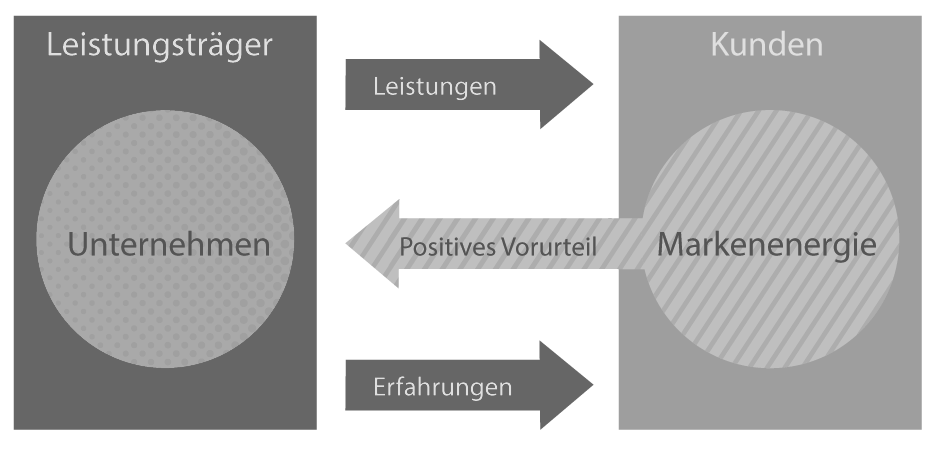
This makes it all the more important to consistently associate positive personal patient experiences with the brand. These intersections at the “point of care” need to be identified and leveraged. Virtually generated (illusory) emotions, as they are daily practice in large parts of the advertising world, are at best useless, often even harmful, in healthcare.
Selected customers in the health & care sector


